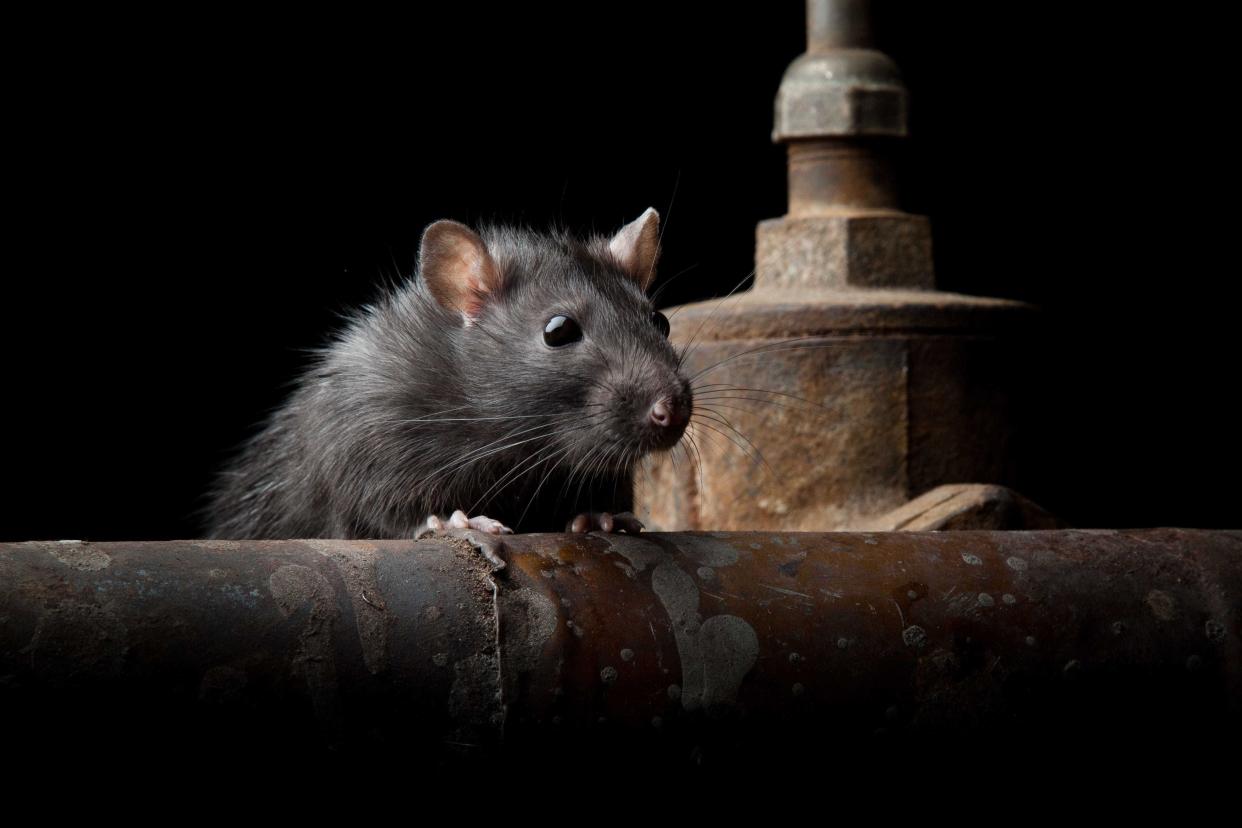3 Ohio towns rank among top 50 'rattiest cities' in America

Life's a rat race – and the rodents are winning.
In an annual list released this week by Orkin, a pest control company, that ranks cities based on the number of new rodent services, Ohio unfortunately placed on the list three times.
According to Orkin, Chicago continued its first-place run in the rat race, topping the company's Top 50 Rattiest Cities list for the ninth year in a row. Los Angeles moved up to the No. 2 spot, while New York City ranked No. 3.
Here's a look at the Ohio towns among the rattiest cities.
Which Ohio cities have the most rats?
Cleveland-Akron ranked as the top area for rats in Ohio, coming in at No. 10 (although the metro area fell one spot from last year). Columbus, on the other hand, rose three spots on the list, jumping up to No. 18.
Cincinnati also made it, ranking No. 31, but fell six spots from last year.
The top rattiest cities in the U.S.
Here's the full list of the Top 50 Rattiest Cities (the number in parentheses indicates the position change for a city).
Chicago, Illinois.
Los Angeles, California (+1).
New York City, New York (-1).
Washington, D.C.
San Francisco, California.
Philadelphia, Pennsylvania.
Baltimore, Maryland.
Denver, Colorado.
Detroit, Michigan (+1).
Cleveland-Akron, Ohio (-1).
Minneapolis-St. Paul, Minnesota.
Seattle, Washington.
Boston, Massachusetts.
Atlanta, Georgia.
Indianapolis, Indiana.
Pittsburgh, Pennsylvania.
Hartford, Connecticut.
Columbus, Ohio (+3).
Miami-Fort Lauderdale, Florida (+1).
Houston, Texas (+10).
Charlotte, North Carolina (+16).
Dallas-Fort Worth, Texas (+2).
Raleigh-Durham, North Carolina (+8).
Milwaukee, Wisconsin (-6).
Grand Rapids, Michigan (-2).
Portland, Oregon (-4).
Norfolk-Portsmouth, Virginia (+1).
San Diego, California (-9).
Richmond-Petersburg, Virginia (+3).
New Orleans, Louisiana (+8).
Cincinnati, Ohio (-6).
Greenville-Spartanburg, North Carolina (+10).
Sacramento, California (+7).
Kansas City, Kansas (-5).
Nashville, Tennessee (-9).
Tampa-St. Petersburg, Florida (+5).
Orlando-Daytona Beach, Florida (+12).
Buffalo, New York (-5).
St. Louis, Missouri (-5).
Phoenix, Arizona (+5).
Champaign, Illinois (-14).
Albany-Troy, New York (-6).
Flint, Michigan (-8).
Burlington-Plattsburgh, New York (+4).
Albuquerque, New Mexico (+17).
Rochester, New York (+5).
South Bend, Indiana (-4).
Syracuse, New York (-9).
Charleston-Huntington, West Virginia (-2).
Greensboro, North Carolina (+17).
How to spot warning signs for rats
Each fall, rats, mice and other rodents invade an estimated 21 million homes in the United States, according to Orkin. They typically enter between October and February, looking for food, water and shelter from the cold.
Rodents can cause health issues. They can also create structural damage with their oversized front teeth.
Because of the threats rodents pose, it's important to learn the warning signs:
Droppings: Rodent droppings are often left behind in places where food is stored, such as kitchen cabinets or pantries, under sinks, inside chewed cardboard boxes, along baseboards or on top of wall beams.
Gnaw marks: Rodents are known to bite through walls, wood and wires. The damage to wiring within walls can increase the risk of a house fire.
Nests: Rodents prefer to nest in dark, secluded areas where there is little chance of disturbance. Be aware of shredded paper products, cotton, packing materials and other fabrics, which are common materials rodents use for bedding.
Rub marks: Rats tend to leave dark grease or dirt marks along walls and floorboards as they follow a trail throughout the home between their nest and food.
Strange noises: Scurrying in the walls or in the attic could mean a rodent family is present. Rodents are especially fond of insulated attics for nest building.
@Colebehr_report; Cbehrens@dispatch.com
This article originally appeared on The Columbus Dispatch: Orkin ranks 3 Ohio towns among 'rattiest cities' in America

